
Having your iPhone speak in your voice might sound like a fun party trick, but for people with speaking and vocal challenges, it could be a game-changer.
Apple announced its Personal Voice accessibility feature back in May and, at WWDC 2023, showed developers how they could use "expressive speech synthesis" to let their own apps speak in the users' voices.
Even though I do not personally have a need for this, I was anxious to see and hear this important accessibility tool in action. Apple's iOS 17 Public Beta, which arrived on July 12, would be my first opportunity.
Spoiler Alert: I was not entirely successful. Even so, I did get the experience of setting up Personal Voice, which is a journey in an of itself.
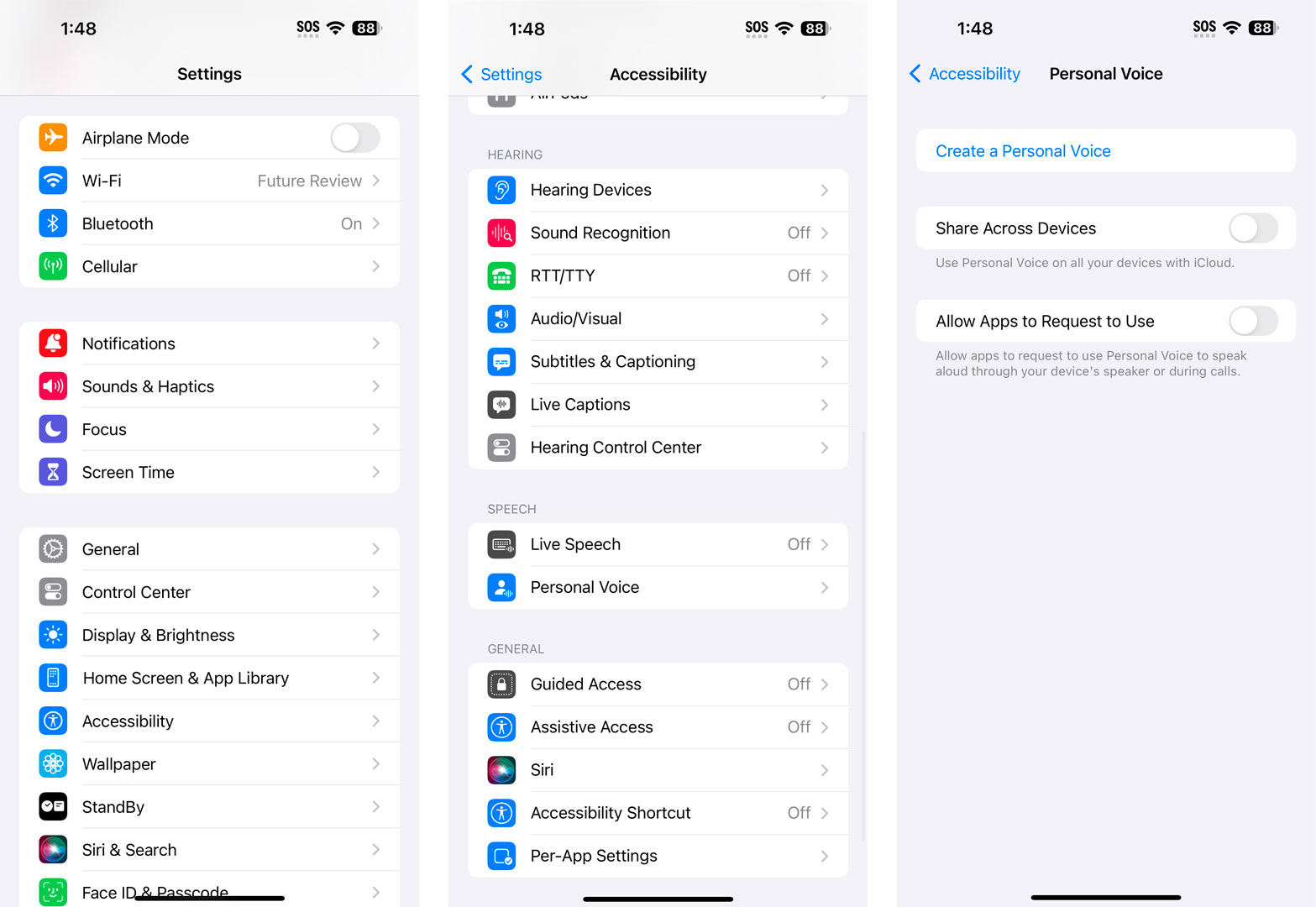
Personal Voice is a thoughtful and potentially powerful tool for capturing someone's voice before they loose it to degenerative disease or disability/. It lets their iPhone speak for them in the voice they may no longer be able to produce themselves.
In other words, it lives under Accessibility for a reason. There are many iOS accessibility features (very, very many) that anyone can repurpose, including shortcuts like tapping the back of the iPhone to activate a feature, VoiceOver, and Reachability. I fully expect some owners will repurpose Personal Voice for their own needs, whatever they are.
In iOS 17, Personal Voice lives in the "Speech" section of your iPhone's Accessibility settings (under Settings). Inside, there's a nice clear blue link for "Create Personal Voice."
The process begins by telling you what to expect and how to prepare to create your own Personal Voice. This is where I learned I'd be recording 150(!) phrases. The instructions promise to create and securely store your Personal Voice.
Apple likes to do all this processing and personal information storage locally for maximum privacy. This also means you can export all the original recorded phrases off the iPhone at any time.
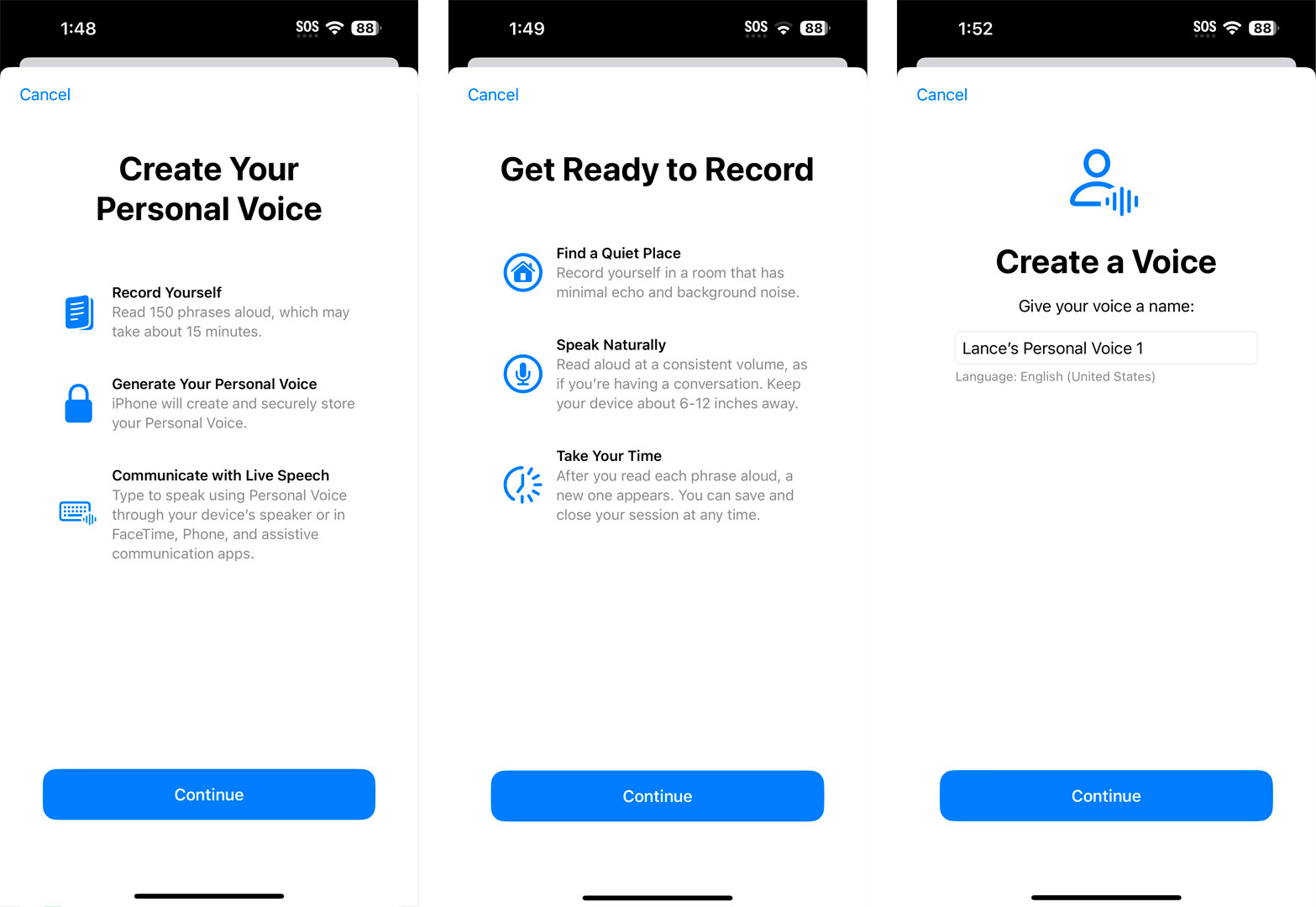
Personal Voice encourages you to find a quiet space. Our office has a studio that mostly cuts out outside noise, so I chose that.
To maximize effectiveness, you should speak in a normal and consistent tone of voice and the setup asks you to keep the phone between 6 and 12 inches from your face.
150 phrase is a lot. Fortunately, you can pause and save your progress at any time. Unfortunately, I wanted to finish the process all in one go and neglected to bring a chair. So I stood, uncomfortably, in one spot during the lengthy recording process.
You begin the process by giving your Personal Voice a name. I liked that the default setup already included my first name, so I left that in place. It does appear that you could store multiple voice profiles on one iPhone.
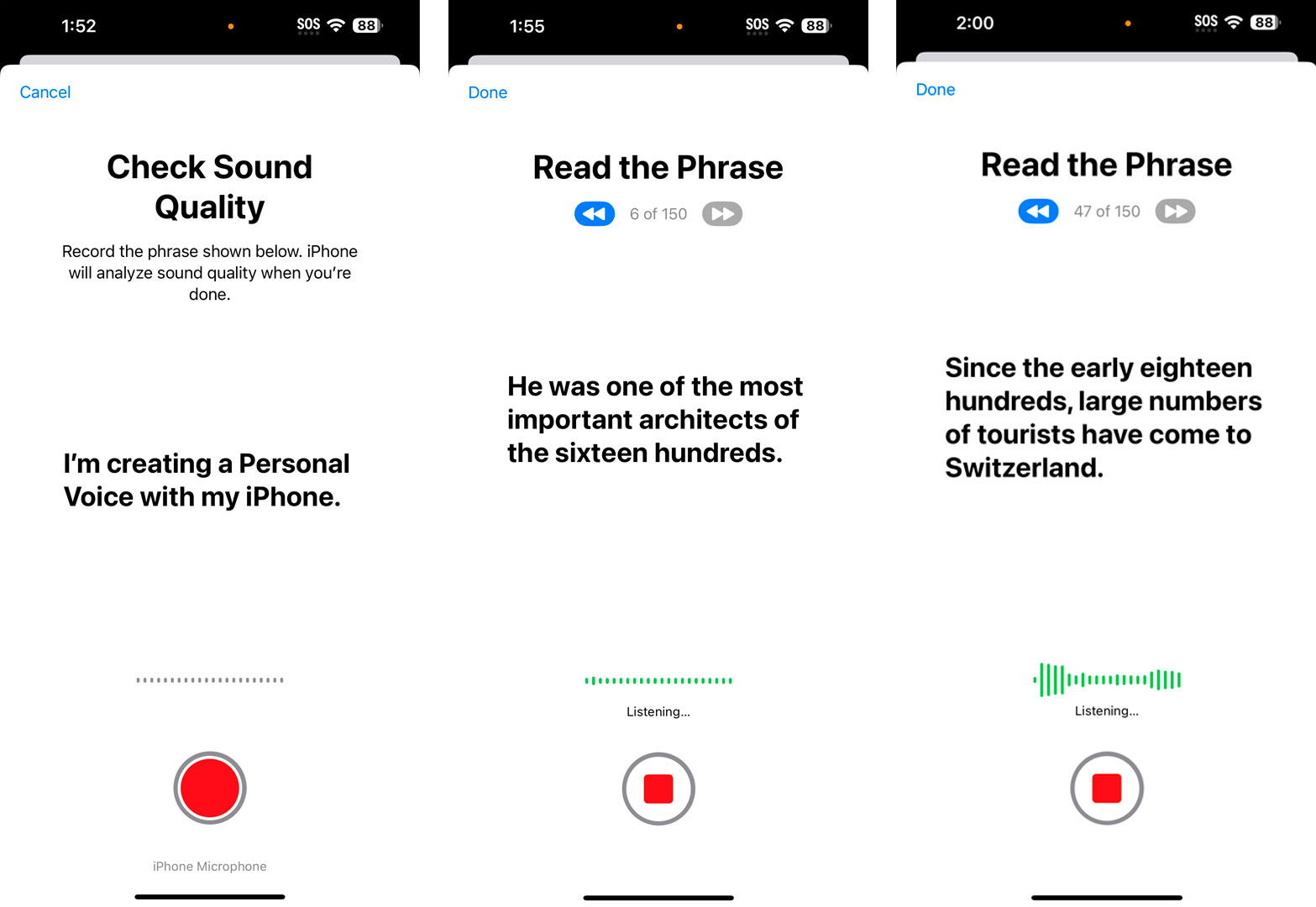
Before I started speaking all the phrases, Personal Voice did a quick sound quality check. I hit the big red record button, read the phrase...and got an error message. This is a beta, after all. Even so, the system allowed me to continue on to the actual phrase recording process.
Once I started recording, I didn't have to hit any buttons, I just spoke the phrase, the phone listened, and then after a moment, it moved onto the next one.
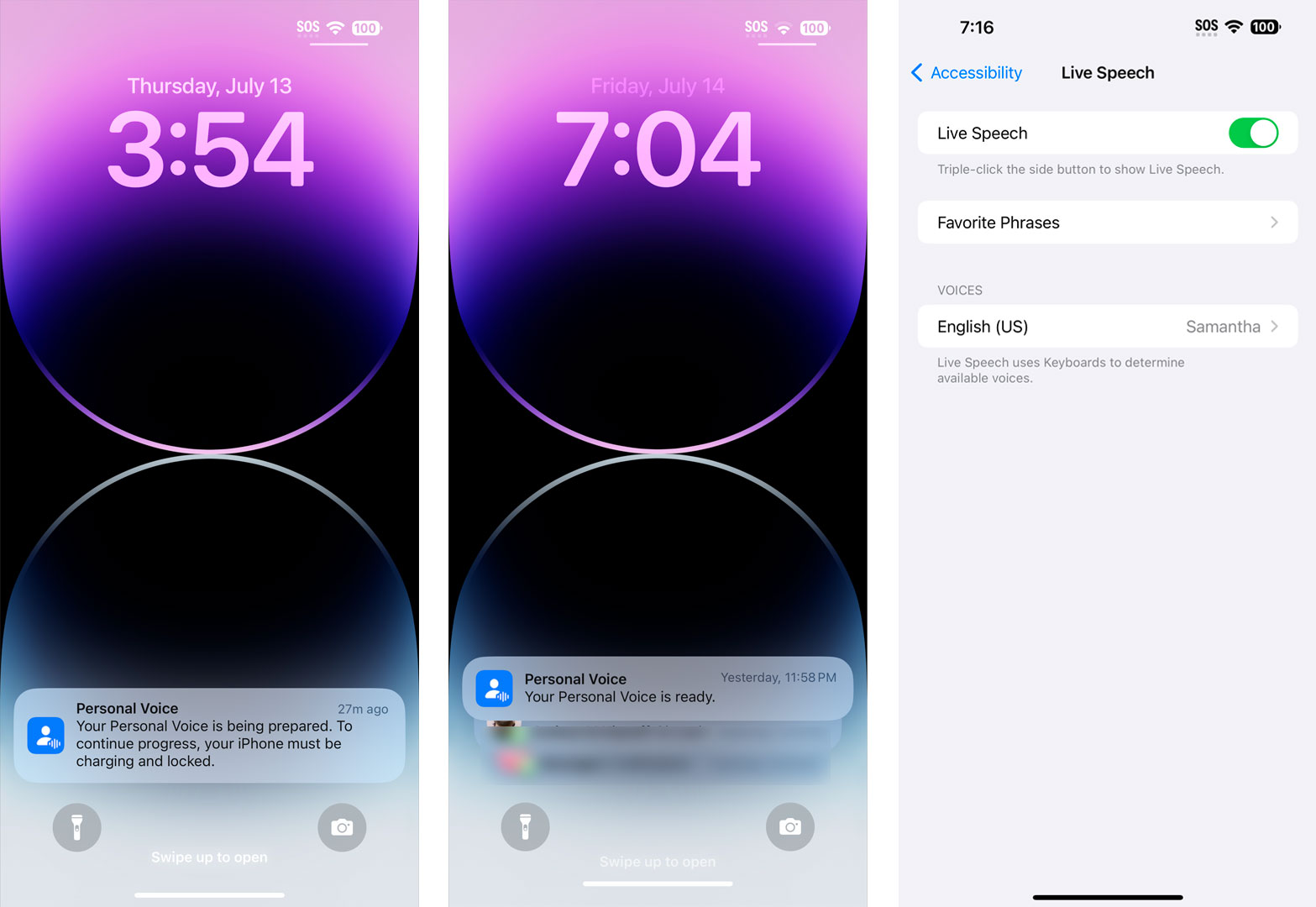
I was thrilled to be finished with my 150 phrases (they're inane and mostly read like Jeopardy! questions), and couldn't wait to hear IOS 17's interpretation of my voice. But there was one more significant hurdle.
The iPhone (in my case an iPhone 14 Pro Max running the latest A16 Bionic CPU) needed an entire day to locally process the audio and generate my Personal Voice. Processing pauses if the phone is not both locked and being charged. Basically, if you plan to try Personal Voice, make sure you have a day to not touch your phone.
In my case, processing finished by the time I woke up the next morning. I'd say it took about 17 hours to process. At least, I think so. Even though the phone reported that my Personal Voice was ready, it was nowhere to be found in Settings/Accessibility/Live Speech/Voices.
Like I said, this is a beta.
I contacted Apple to see if, perhaps, I missed a control or setting, but I think Personal Voice may simply not be fully enabled in this first iOS 17 Public Beta.
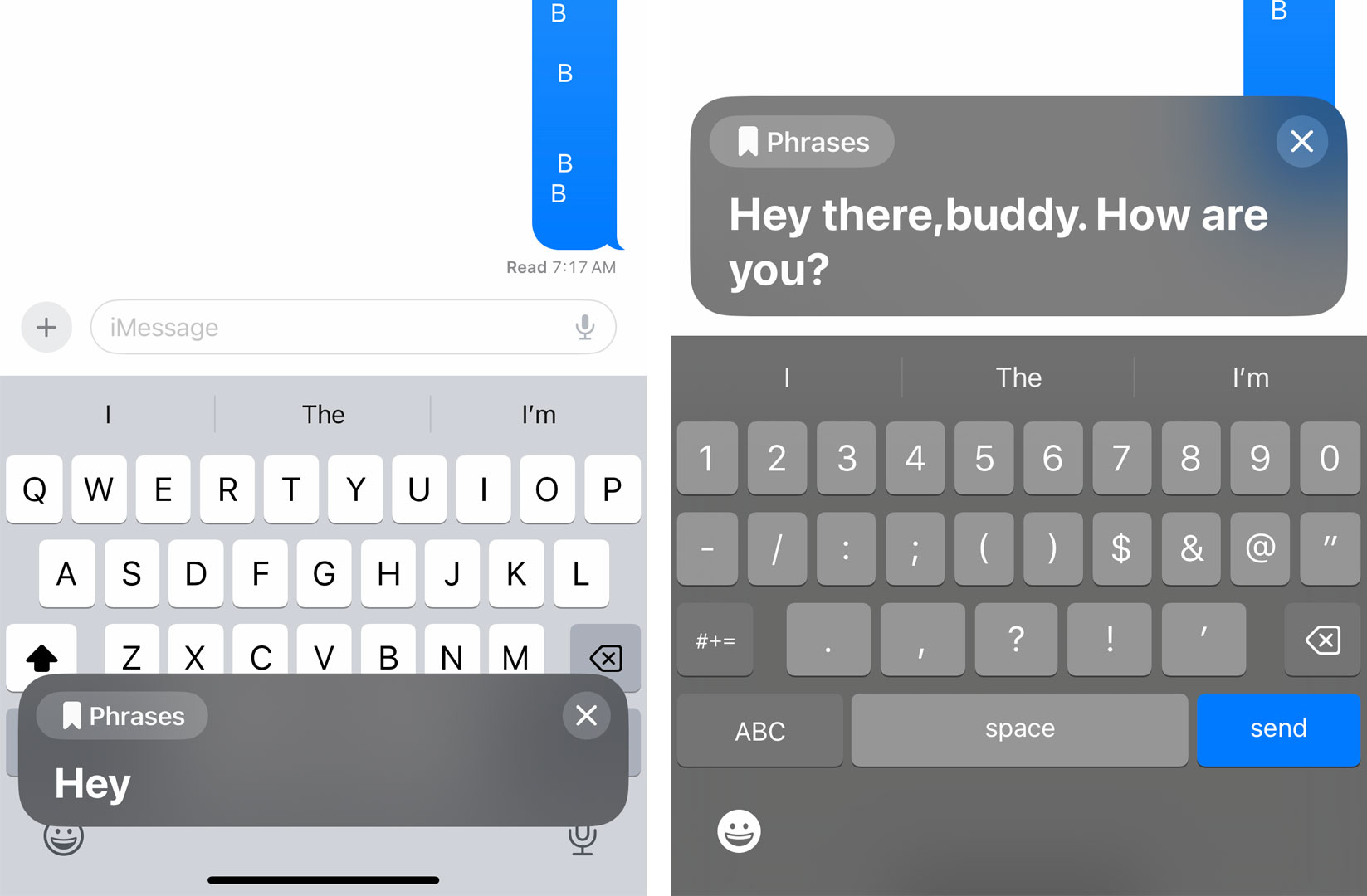
If you get Personal Voice to work, you'll activate its use by triple-pressing the power/sleep button while in any app. You can try this out in Messages and the app will play back whatever message you typed in your Personal Voice. If that voice isn't set up, the iPhone will use a different default voice. In my case it was "Samantha." The system will also let you save some favorite phrases that can be repeated in your Personal Voice.
Even though I failed to get Personal Voice working, I still think this is an exciting and valuable accessibility feature for those who might struggle to speak or even be in danger of losing their voices. This iOS 17 update might be a great way to preserve a piece of their identity voice for themselves and their loved ones, allowing them to still communicate in a simulacrum of their voice.







